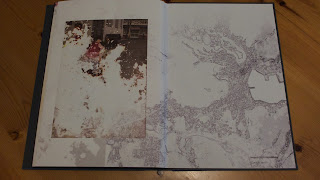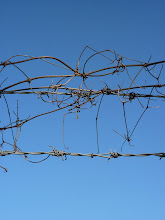The Restoration Will ( part 2 )
THE RESTORATION WILL
A photobook review.
The Restoration Will is a photobook by Mayumi Suzuki originally released as a limited edition of 87 copies handmade by the artist
in association with RPS in Tokyo. A new revised hand assembled edition
of 450 copies has just been published in Italy by Ceiba Editions.
Mayumi was born and brought up in Onagawa, Miyagi prefecture Japan. Her father ran a photo studio from their family home.
Onagawa was severely damaged in the tsunami that occurred in March 2011 and Mayumi’s parents have been missing ever since.
The new Ceiba Editions version with "Obi" band.
Part 2
Reading the book
This is a summary of the new edition published by Ceiba in Italy.
Please click on the images to view in full detail.
Please click on the images to view in full detail.
For this new edition once the Obi band is removed the title and artist name are only written on the spine leaving the front cover free of text. The front and back covers are bound with textured blue paper dotted with coloured flecks. Perhaps a representation of the binding on Mayumi's father's portfolio? but the deep blue cover also echoes the sparkling algae from the central fold out or even simply the idea of the vast blue ocean which plays a large part in this story.
Inset on the front cover "floating in the blue" is a small damaged photograph; you can just make out a child wearing some red clothes, seemingly on a street somewhere in Japan as Japanese text can be seen on a building at the end of the road. Two thirds of the image is not visible, it is somehow damaged and bleached white.
Inside the cover the title page contains a tiny illustration depicting a building, perhaps this was a logo for the family portrait business? As you turn to the first page a photograph of the same building is revealed with three girls posing on the street in the foreground.
Turn another page and we are introduced to the town of Onagawa seen as an elevated view in a full bleed double page spread. The photograph is in colour, the sky and sea are blue, and the mountain in the background is forested and green. Between the sea and the mountain the town buildings seem crammed into the low lying area; clearly this is a busy harbour town. However there is a date on the photo; 2006, five years before the huge tsunami of March 2011 tore into the bay destroying almost all of the buildings we can see in this photograph. The photo was taken by Mayumi's Father from a vantage point on a hillside where a flight of stone steps climbed to one of the town's shrines.
Over the next four pages we are introduced further to the views of Onagawa and to the members of Mayumi's family and their home and studio via her father’s photos. These images are all in colour, classic family snapshots.
Suddenly we turn the next page and everything has gone dark, a murky, inky black and white image fills a double page spread. It seems to depict some fishing boats moored in the harbour.
Part of the page folds out as a flap revealing a small section of text in both English and Japanese. We are reading a telephone conversation between Mayumi and her parents, it's March 9th 2011, there has been a reasonably large earthquake and Mayumi is checking her parents are okay. They are joking with her about what happened that day, and then we read the final haunting line on the page, this was the last time Mayumi ever spoke to her Mother and Father.
Just two days later the huge earthquake and tsunami struck the North East coast of Japan and Onagawa was right in the centre of the worst hit area.
Over the next few pages we see more ink black shadowy images; fishing boats, roaring waves, hillside track ways and then scenes of total destruction. Under more folding flaps amongst this darkness more text explains Mayumi's desperate attempts to contact her parents on March 11th and then a conversation with her sister where they start to realise their parents may not have survived.
Suddenly we are back to colour, post tsunami, viewing Mayumi's photographs of the rubble near her family home. We can recognise that part of the photography studio is still standing from a distinctive section of tiled wall clearly visible in the opening image of the book. We turn the page and open some fold-outs to find ourselves inside the ruined darkroom with loose power cables and developing equipment strewn around amongst the debris.
Next we see the destroyed area of town where the studio stood in a wider shot; there is a small flap on the page, under this the inset image of a dusty camera lens. Mayumi found her Father's lens lying in the rubble, perhaps in the spot depicted on the flap? She recovered the damaged lens and decided to try to use it to take some pictures for this project.
The next section of the book depicts photographs recovered from the rubble and mud by a team of volunteers and later reclaimed by Mayumi.
First we open a flap to reveal a smaller separate hand bound blue booklet inserted beneath. Upon lifting it out we find its cover and pages are wrinkled as though damaged by water. Below the booklet we see a portrait on the page, a smartly dressed man wearing a suit and tie, a politician maybe? In fact he was a carpenter and boat builder posing for Mayumi's father. The blue wrinkled booklet represents a portfolio of these portraits that was recovered from the rubble, water damaged but full of memories for Mayumi. As a student she had in fact helped her father print the portraits in the same family darkroom we saw ruined on a previous page.
Returning to the main book we next see some damaged family snaps similar to the one on the front cover with the white bleached areas forming random patterns across the images. Then the inky black pages return with their ghostly views echoing the scars on the family snaps.
By the centre of the book we have returned to the ocean and a faint blue glow appears in the inky blackness. Pages fold out and then fold out again to give a six page spread, it's the ocean at night, mostly black but certain waves are glowing blue with luminescent algae. Superimposed on these waves are translucent images of Mayumi's mother and father their spirits floating somewhere in the vast ocean. Such a beautiful image that really packs an emotional punch as the reality of Mayumi’s story hits home. Her parents vanished in the tsunami and have never been found.
Now the pages have turned almost completely black, shadowy images of light creeping through tree branches, reflections on water, rocks and islands poking out from the sea all struggle to emerge from the darkness. These images were all taken by Mayumi with the lens recovered from the rubble. The shutter was damaged so needed to be opened and closed by hand thus Mayumi shot these photographs at dusk to be able to get any image at all. Eventually there are ghostly figures and spots of candle light within an image taken on the anniversary of the tsunami at dusk in the freezing cold. It's a gathering of family, friends and neighbours drinking coffee to warm the memory of loved ones still missing in the cold dark ocean.
Then the last black image is a flight of steps with their railings seeming to glow with light perhaps finally leading someone up out of the darkness into the future.
The book finishes where it began with a larger copy of the cover image, this time superimposed on a map of Onagawa and we see a relationship between the bleached scars on the photo and the topography of the town. There is one final flap to lift and underneath we see the same photograph restored, it's a young Mayumi wearing a red tunic being carried on her sisters back along the street in Onagawa. A restored photograph rescued from the mud and rubble reviving a memory of happier family times before the disaster.












0 Comments:
Post a Comment
Subscribe to Post Comments [Atom]
<< Home